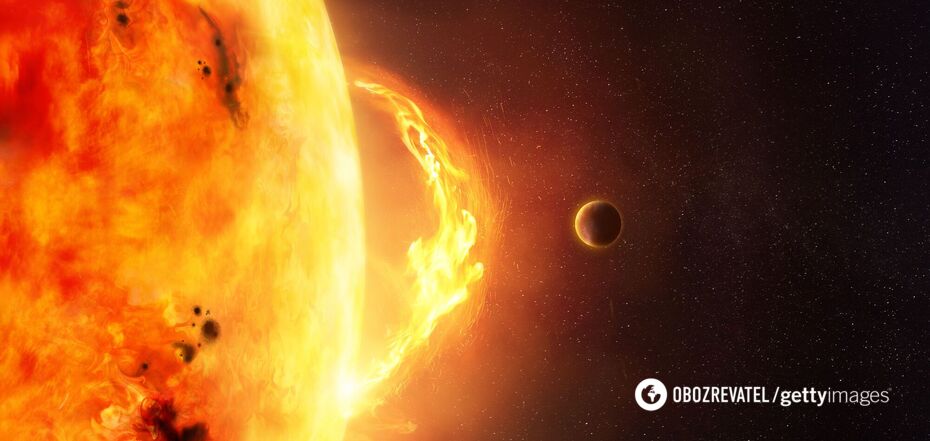News
Supergiant Betelgeuse disappeared from the night sky for some time: what happened to Earth's neighbor
The famous orange-red star Betelgeuse, which has been fascinating scientists with its luminous tricks for years, has completely disappeared from the night sky this time. However, this phenomenon could be observed only in some parts of the world and only for 10 seconds.
The space phenomenon was reported by Inverse. According to Ukrainian time, the eclipse of Betelgeuse took place in the middle of the night, but it was not possible to see this extremely rare phenomenon from the territory of our country.
Betelgeuse, which is located on the left shoulder of the constellation Orion, disappeared due to a "meeting" with the huge asteroid Leon at about 3:17 am Kyiv time. Residents of southern Florida (USA), southern Spain and southern Italy, northern Turkey or Central Asia could see the phenomenon.
An asteroid called Leona passed in front of the star, blocking its light for 10 seconds. The eclipse occurred even though Betelgeuse, according to NASA, is 700 times larger than our Sun, while Leona is 50 kilometers wide. The asteroid was favored by the fact that the star is much farther from Earth, about 700 light years away.
This eclipse was a unique chance for scientists to learn about the star's surface. Similarly, solar eclipses allow scientists to see unique formations on the Sun because the Moon's shadow blocks much of the light from our star.
Scientists hoped that this brief eclipse would allow them to better study Betelgeuse's surface, and possibly learn more about what causes its variable brightness.
Such an eclipse of a 1st magnitude star is a rare event. Sky & Telescope claims that such events can be seen from Earth only once every few decades.
Betelgeuse is the tenth brightest star in our night sky and is only 10 million years old. This makes it much younger than our Sun, which is already 4.6 billion years old. At the end of its short life, Betelgeuse exhibits amazing light fluctuations.
For a century, astronomers have seen that red stars, including Betelgeuse, are capable of changing color and brightness. According to NASA, in 2019, researchers noticed that Betelgeuse dimmed by about 60%. Scientists know that the star goes through 400-day and five-year cycles of light changes, but this was a much larger eclipse than those recorded before.
That event was called the Great Eclipse. It is believed that the cause of this phenomenon was a dust cloud that blocked the light of the red supergiant. The star itself "coughed up" this dust from its bowels, releasing several times more substance than the Moon. This eclipse excited scientists greatly as they assumed that Betelgeuse was preparing to explode in a supernova. But it turned out that this was not the case.
However, one day, Betelgeuse will explode as a supernova, creating a bright spectacle in the Earth's sky.
Earlier, OBOZ.UA reported that according to scientists from Japan, astronomers can be significantly mistaken in their estimates of Betelgeuse's age and the star is likely to explode much earlier than expected.
Subscribe to OBOZREVATEL on Telegram and Viber to stay up to date with the latest news.



























